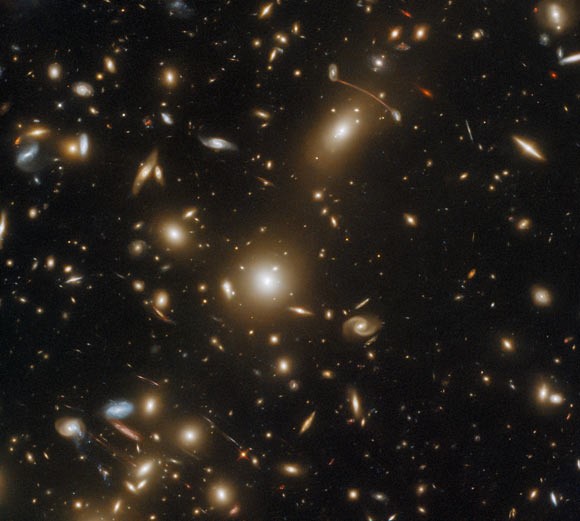NASA's Hubble Space Telescope has seen a million galactic wonders, uncovered mysteries, snapped stunning photos, and witnessed otherworldly phenomena. This new observation is undoubtedly one of the books.

In this newly-released image by the space telescope, clusters of brilliant galaxies are all shining in unison. However, what is occurring here is not merely highlighting the brilliance of these clusters but is also unraveling a greater phenomenon unfolding in space.
Astronomical Phenomena
With its Wide Field Camera 3 and Advanced Camera for Surveys, the NASA/ESA Hubble space observatory was able to capture t this enormous galaxy cluster in an ultra-bright display, known as Abell 1351.
The Abell 1351 is located in the constellation Ursa Major, in the northern hemisphere.
Flashes of light that appear throughout this image are photographs of far-off galaxies. The streaks are a byproduct of gravitational lensing, an astronomical phenomenon that happens when a large celestial object, like a galaxy cluster, dramatically distorts spacetime, almost as if the light were going through a huge lens.
According to NASA, gravitational lensing can vary in two levels, which are strong and weak. Both varieties are useful for determining the distribution of mass found within a lensing galaxy, such as Abell 1351.
Read also : NASA Hubble Space Telescope Snaps Largest-Ever Image of the Universe - Rare Galaxies Spotted!
The Wonder of Galaxy Clusters
Thousands of galaxies of varying ages, shapes, and sizes can be found in galaxy clusters. They often have masses that are one million billion times greater than that of the Sun.
These clusters were once thought to be the biggest structures in the Universe, but superclusters were eventually discovered in the 1980s, overtaking them.
However, it is worth noting that galaxy clusters continue to be the largest objects in the Universe bound by gravity because superclusters are not kept together by gravity.
Hundreds of galaxies and massive amounts of hot gas and dark matter make up galaxy clusters, among the largest universe formations. Galaxy cluster collisions provide tremendous amounts of energy unlike anything seen since the Big Bang.
The formation of galaxy clusters is theorized to result from the gravitational attraction of clumps of dark matter and the associated galaxies, which subsequently combine to form clusters of hundreds or even thousands of galaxies.
This captured image is an observation for an astronomical photo collection that includes images of several of the largest galaxy clusters in space. This collection of huge clusters exhibits fascinating phenomena, including strong gravitational lensing, as well as offering stunning illustrations of ferocious galaxy evolution.
Astronomers suggested a Snapshot Program be squeezed into Hubble's busy observing schedule to acquire this astronomical album.
These Snapshot Programs are collections of discrete, reasonably brief exposures that can be squeezed in between longer Hubble observations. The space telescope can make the most of every minute of observing time and increase the observatory's scientific output by drawing from a wide pool of Snapshot possibilities.
This article is owned by Tech Times
Written by Joaquin Victor Tacla
ⓒ 2025 TECHTIMES.com All rights reserved. Do not reproduce without permission.




